Firth, James
Killed in Action 1945-01-13
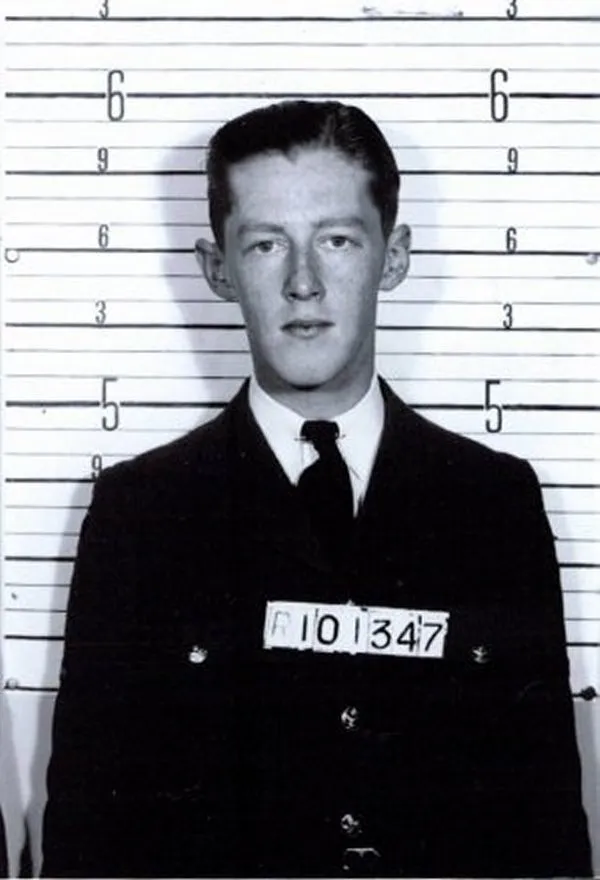

Birth Date: 1924
Born:
Son of Harry and Winifred Firth, of Stratford-on-Avon.
Home: Victoria, British Columbia
Enlistment:
Enlistment Date: Unknown
Service
RCAF
Unit
418 Sqn- Squadron
Piyautailili Defend even unto death: Inuktitut
Base
Rank
Pilot Officer
Position
Pilot Officer
Service Numbers
J/93816
Prev: R/101347
First Burial
 Blacon Cemetery, Chester, Cheshire, Uk
Blacon Cemetery, Chester, Cheshire, Uk
Airspeed Oxford
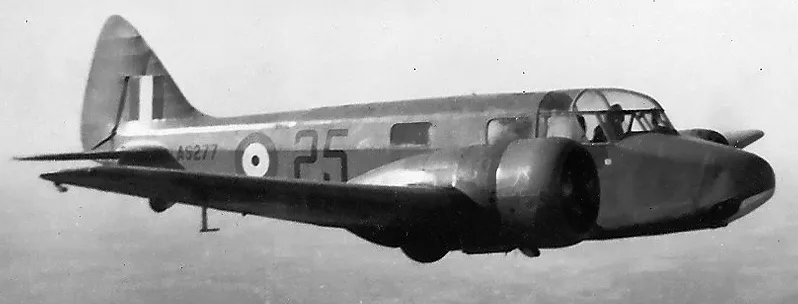
Airspeed A.S. 10 Oxford Mk. II, RCAF (Serial No. AS277), 25, in flight over Saskatchewan, 1942.
The Airspeed AS.10 Oxford was a twin-engine monoplane aircraft developed and manufactured by Airspeed. It saw widespread use for training British Commonwealth aircrews in navigation, radio-operating, bombing and gunnery roles throughout the Second World War.
The Oxford was developed by Airspeed during the 1930s in response to a requirement for a capable trainer aircraft that conformed with Specification T.23/36, which had been issued by the British Air Ministry. Its basic design is derived from the company's earlier AS.6 Envoy, a commercial passenger aircraft. Performing its maiden flight on 19 June 1937, it was quickly put into production as part of a rapid expansion of the Royal Air Force (RAF) in anticipation of a large-scale conflict.
As a consequence of the outbreak of war, many thousands of Oxfords were ordered by Britain and its allies, including Australia, Canada, France, New Zealand, Poland, and the United States. Following the end of the conflict, the Oxford continued to achieve export sales for some time, equipping the newly formed air forces of Egypt, India, Israel, and Yugoslavia. It was considered to be a capable trainer aircraft throughout the conflict, as well as being used a general-purpose type. A large number of Oxfords have been preserved on static display.Wikipedia
418 Sqn Piyautailili ("City of Edmonton")
History of the Squadron during World War II (Aircraft: Boston III, Mosquito II, FB Mk VI)
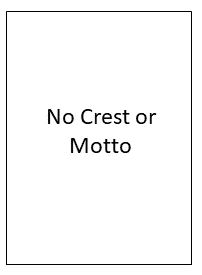
[Note that the squadron crest and motto were not given to the squadron until after WWII. During WWII the squadron had neither crest nor motto.] The squadron was formed at Debden, Essex, UK  in November 1941as the RCAF's only Intruder Squadron. As such, it was attached to 11 Group of Fighter Command (later renamed Air Defence of Great Britain), conducting day and night intruder operations. These involved a variety of targets, strategic attacks and intruder attacks on airfields. Originally the squadron flew Douglas Boston Mk. III, with the squadron code letters being TH. They flew from a number of airfields in the south of England from 1942 to 1944, namely Debden, Bradwell Bay, Ford, Holmsley South, Hurn, Middle Wallop and Hunsdon. In March 1943 the squadron re-equipped with de Havilland Mosquito Mks. II and F.B. VI aircraft., with a marked increase in their successes in destroying enemy aircraft. The squadron claimed its hundredth victory in May 1944. After D-Day the squadron was involved in the campaign against V-1 and V-2 weapons.
in November 1941as the RCAF's only Intruder Squadron. As such, it was attached to 11 Group of Fighter Command (later renamed Air Defence of Great Britain), conducting day and night intruder operations. These involved a variety of targets, strategic attacks and intruder attacks on airfields. Originally the squadron flew Douglas Boston Mk. III, with the squadron code letters being TH. They flew from a number of airfields in the south of England from 1942 to 1944, namely Debden, Bradwell Bay, Ford, Holmsley South, Hurn, Middle Wallop and Hunsdon. In March 1943 the squadron re-equipped with de Havilland Mosquito Mks. II and F.B. VI aircraft., with a marked increase in their successes in destroying enemy aircraft. The squadron claimed its hundredth victory in May 1944. After D-Day the squadron was involved in the campaign against V-1 and V-2 weapons.
On November 21, 1944 the squadron was transferred from Fighter Command to the 2nd Tactical Air Force in No. 136 (RAF) Wing and operated from Hartford Bridge, Hampshire, UK. before moving to Base 71 at Coxyde, Belgium, and then finally moving to Base 80 at Volkel, the Netherlands  . The squadron was disbanded there on September 7th 1945.
. The squadron was disbanded there on September 7th 1945.
The squadron was the most high-scoring unit of the RCAF in WWII. It claimed 178 aircraft and 79 and a half V-1 Flying Bombs. There were a number of aces, among them Wing Commander R. Bannock, DFC and Bar, Squadron Leader R. Gray, DFC, Flying Officer S.P. Reid DFC, Squadron Leader H.D. Cleveland DFC, Flight Lieutenant C.M. Jasper DFC, Flight Lieutenant J. Evans, Flight Lieutenant S.H.R. Cotterill DFC, Flight Lieutenant D.E. Forsyth, Squadron Leader J.B. Kerr, Flight Lieutenant H.E. Miller and Flight Lieutenant P.S. Leggatt. The squadron won 3 DSO's, 42 DFC's, 9 Bars to DFC's, 1 Second Bar to DFC, 5 DFM's, 1 DFC(USA) and 1 Air Medal (USA). Overall, 3492 sorties were flown, 402 of which were on anti-V-1 patrols. 11,248 hours were flown operationally for the loss of 59 aircraft. The squadron was credited with destroying 178 aircraft, 17 locomotives destroyed and 59 damaged, with other destruction of rolling stock and motor vehicles. Battle Honours were: Defence of Britain 1944, Fortress Europe 1942-44, Dieppe, France and Germany 1944-45, Normandy 1944, Rhine. Wikipedia, Kostenuk and Griffin
Map for Movements of 418 Squadron 1941-45
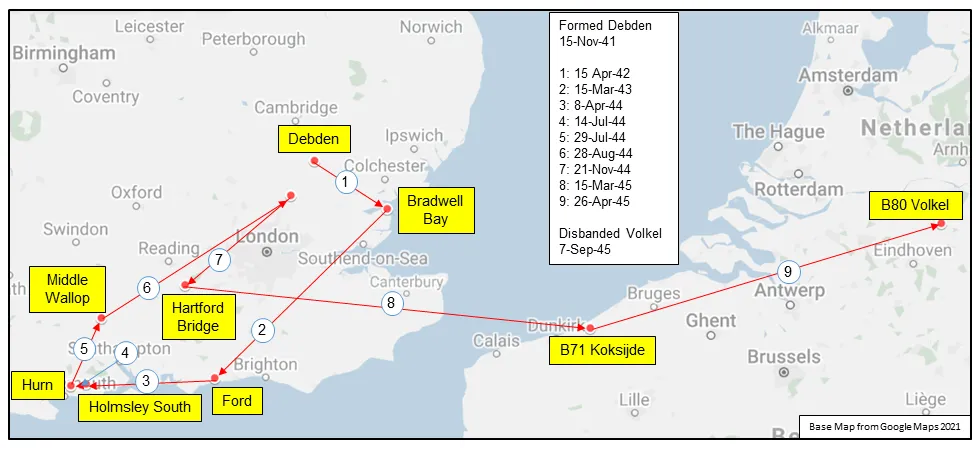
418 Squadron History Summary 1941-45
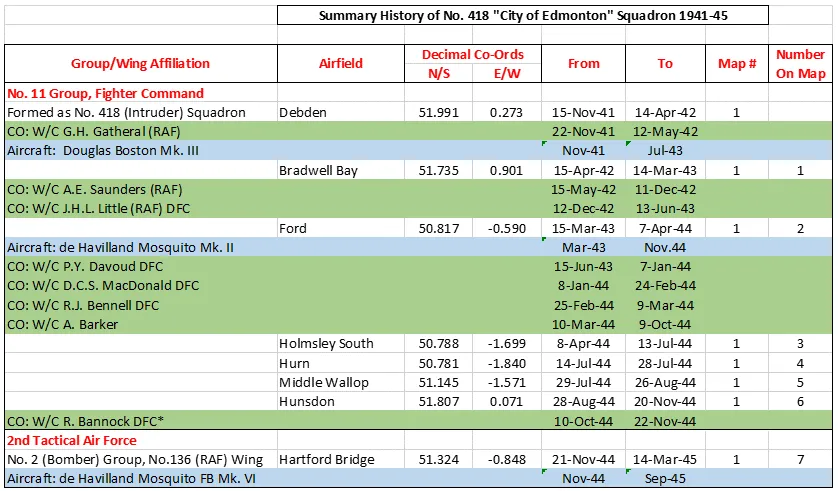
418 Squadron History Summary 1941-45 Page 2

History of the Squadron Post-WWII (Aircraft: Harvard II, Mitchell, Expeditor, Silver Star, Otter, Twin Otter, Kingfisher)
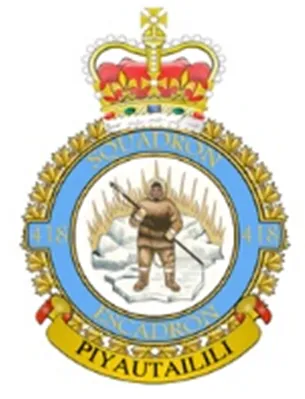
The squadron re-formed at Edmonton, Alberta  on 15 April 1946, flying North American B-5 Mitchell aircraft in a light bomber role. It moved to RCAF Station Namao, Alberta
on 15 April 1946, flying North American B-5 Mitchell aircraft in a light bomber role. It moved to RCAF Station Namao, Alberta  in 1955. In March 1958 it was reassigned to a light transport and emergency rescue role and was re-equipped with Beechcraft Expeditor and de Havilland Otter aircraft. Its duties ranged from aid to the civil power to aerial resupply. On 27 May 1967 it received a Squadron Standard for 25 years’ service. On 1 February 1968 the squadron was integrated into the Canadian Armed Forces as No. 418 “City of Edmonton†Air Reserve Squadron, and acquired de Havilland Twin Otter aircraft The squadron was disbanded in 1994, its aircraft being transferred to No 440 Transport Squadron.
in 1955. In March 1958 it was reassigned to a light transport and emergency rescue role and was re-equipped with Beechcraft Expeditor and de Havilland Otter aircraft. Its duties ranged from aid to the civil power to aerial resupply. On 27 May 1967 it received a Squadron Standard for 25 years’ service. On 1 February 1968 the squadron was integrated into the Canadian Armed Forces as No. 418 “City of Edmonton†Air Reserve Squadron, and acquired de Havilland Twin Otter aircraft The squadron was disbanded in 1994, its aircraft being transferred to No 440 Transport Squadron.
418 Squadron was re-formed on March 13, 2019, The unit is based at 19 Wing Comox, British Columbia  as 418 Search and Rescue Operational Training Squadron, training aircrew and maintenance personnel on the CC-295 Kingfisher, using simulators and aircraft, when the aircraft are delivered.
as 418 Search and Rescue Operational Training Squadron, training aircrew and maintenance personnel on the CC-295 Kingfisher, using simulators and aircraft, when the aircraft are delivered.
 Canadian Virtual War Memorial
Canadian Virtual War Memorial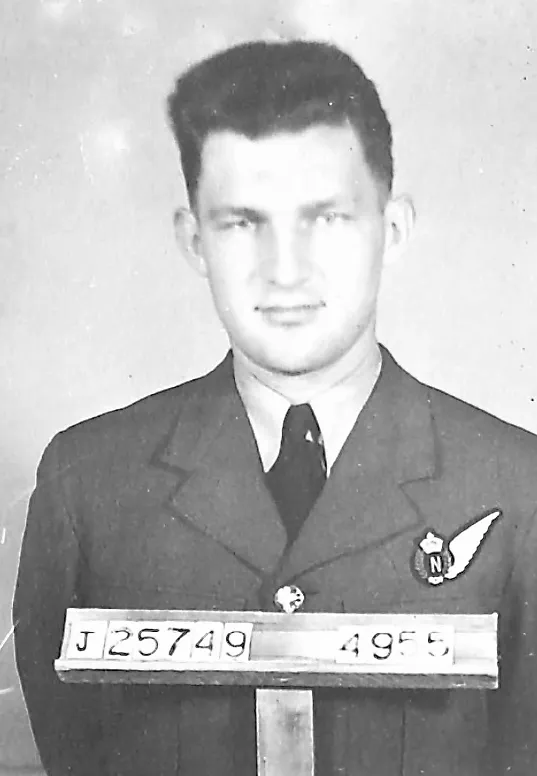
 Oxford Trainer
Oxford Trainer Wikipedia Oxford Trainer
Wikipedia Oxford Trainer  Harold A Skaarup Web Page
Harold A Skaarup Web Page